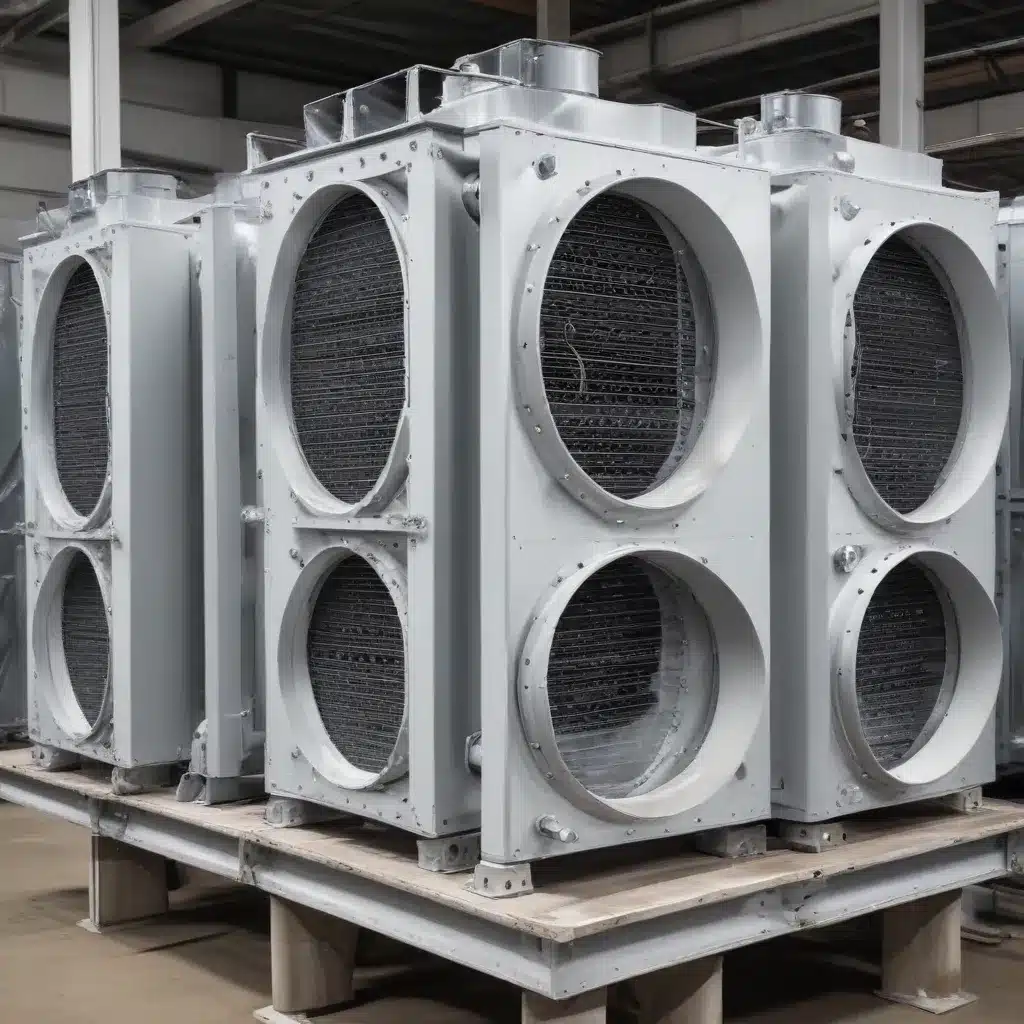
Understanding the Evolving Regulatory Landscape
The air-cooled heat exchanger industry is facing an increasingly complex regulatory environment, with new and emerging standards that demand a proactive approach to compliance. This article will explore the key developments in industry regulations, how they impact air-cooled heat exchanger design and operations, and provide practical strategies for addressing these challenges.
Adapting to Stricter Emissions Standards
The recent EPA rule establishing new source performance standards for greenhouse gas emissions from fossil fuel-fired power plants has significant implications for air-cooled heat exchanger systems. This regulation requires fossil fuel-fired electric generating units (EGUs) to implement advanced emissions control technologies, such as carbon capture and sequestration (CCS), to achieve substantial reductions in carbon dioxide (CO2) emissions.
For air-cooled heat exchangers serving these EGUs, this means ensuring compatibility with CCS systems and optimizing heat transfer performance to support the increased energy demands of capture and compression processes. Designers and operators must carefully evaluate the thermal, mechanical, and metallurgical requirements of integrating CCS technology into existing or new air-cooled heat exchanger installations.
Navigating Evolving Regulatory Frameworks
Beyond emissions standards, the broader regulatory landscape continues to evolve, with agencies like the EPA and state governments implementing new policies and guidelines that impact the air-cooled heat exchanger industry. These include regulations governing water usage, wastewater discharge, noise pollution, and worker safety, among others.
Staying up-to-date with these changes and proactively addressing compliance requirements is crucial for air-cooled heat exchanger manufacturers, engineers, and facility operators. Leveraging industry resources, engaging with regulatory bodies, and adopting a holistic approach to compliance management can help organizations navigate this dynamic environment.
Design and Engineering Considerations
Optimizing for Emissions Control Systems
The integration of CCS technology into power generation facilities has created new design challenges for air-cooled heat exchanger systems. Achieving the required heat transfer performance to support the increased energy demands of capture and compression processes, while maintaining optimal efficiency and reliability, requires innovative engineering solutions.
One key design consideration is the selection of materials and coatings that can withstand the potentially corrosive environments introduced by the CCS process. Careful evaluation of metallurgical properties, erosion resistance, and fouling tendencies is essential to ensure long-term system integrity and performance.
Additionally, the increased auxiliary power consumption of CCS systems may necessitate larger air-cooled heat exchangers or the deployment of more efficient fan and drive technologies to maintain overall plant efficiency. Thermal and flow modeling, as well as advanced heat transfer analysis, are crucial in optimizing air-cooled heat exchanger designs for CCS-enabled power plants.
Addressing Water Usage and Wastewater Concerns
Traditionally, air-cooled heat exchangers have been viewed as a water-efficient alternative to water-cooled systems. However, as water scarcity concerns intensify and regulatory standards become more stringent, the industry must also address the water-related impacts of air-cooled heat exchanger operations.
Strategies such as the use of hybrid wet-dry cooling systems, advanced water treatment technologies, and the implementation of zero-liquid discharge (ZLD) processes can help mitigate the water footprint of air-cooled heat exchanger installations. These approaches not only address regulatory compliance but also contribute to the overall sustainability and water stewardship of industrial operations.
Enhancing Reliability and Maintainability
As air-cooled heat exchanger systems become increasingly integrated into complex industrial processes, their reliability and maintainability are of paramount importance. Predictive and condition-based maintenance strategies, leveraging advanced sensor technologies and analytics, can help optimize equipment uptime, reduce unplanned downtime, and minimize the overall life-cycle costs of these critical assets.
Additionally, design features that facilitate easy access, modular component replacement, and remote monitoring capabilities can enhance the maintainability of air-cooled heat exchangers, ensuring they continue to operate at peak efficiency throughout their lifespan.
Optimizing Performance and Compliance
Balancing Efficiency and Emissions Reduction
The drive to reduce greenhouse gas emissions has led to a growing emphasis on the energy efficiency of air-cooled heat exchanger systems. Optimizing fan and drive technologies, improving airflow management, and implementing advanced controls can all contribute to enhancing the overall energy performance of these systems.
However, the pursuit of efficiency must be balanced with the need to support emissions control technologies, such as CCS. Air-cooled heat exchanger design and operations must be carefully optimized to strike the right balance between energy efficiency and the increased thermal and power demands of emissions reduction strategies.
Leveraging Digital Technologies for Compliance
The air-cooled heat exchanger industry can benefit from the integration of digital technologies to streamline compliance management. Automated data collection, real-time monitoring, and advanced analytics can help organizations track and report on key performance indicators, identify potential compliance issues, and proactively address regulatory requirements.
Cloud-based platforms, predictive maintenance algorithms, and remote diagnostics can also enhance the ability of air-cooled heat exchanger operators to maintain optimal system performance and ensure continued compliance with evolving industry standards.
Collaborative Approaches to Innovation
Addressing the complex challenges posed by emerging regulations and industry standards requires a collaborative approach. Air-cooled heat exchanger manufacturers, engineering firms, industry associations, and regulatory bodies must work together to develop innovative solutions, share best practices, and ensure the industry’s collective readiness to meet future compliance needs.
The Air Cooled Heat Exchangers blog serves as a valuable resource for the industry, offering a platform for knowledge sharing, technical discussions, and the exploration of emerging trends and technologies. By engaging with this community, air-cooled heat exchanger professionals can stay informed, contribute their expertise, and help shape the future of the industry.
Conclusion
The air-cooled heat exchanger industry faces a dynamic and evolving regulatory landscape, driven by an increasing focus on environmental sustainability, emissions reduction, and resource conservation. By adapting design and engineering practices, optimizing system performance, and leveraging digital technologies, industry stakeholders can overcome these compliance challenges and position themselves for long-term success.
Collaboration, knowledge sharing, and a proactive approach to addressing emerging standards will be key to ensuring the air-cooled heat exchanger industry continues to thrive in the face of these emerging industry requirements. By embracing these strategies, air-cooled heat exchanger professionals can navigate the complexities of the regulatory environment and deliver innovative, sustainable, and compliant solutions to their customers.

